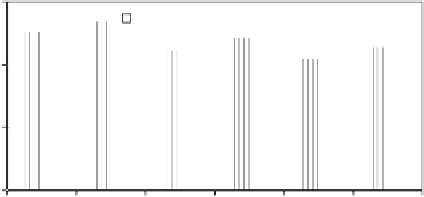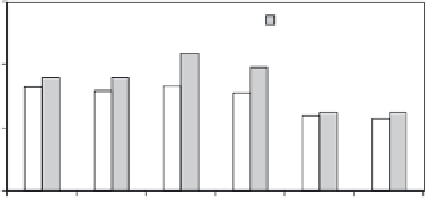Civil Engineering Reference
In-Depth Information
120
Nanofill-15, 7%
Cloisite-15A, 7%
80
40
0
750
900
1100
1300
1500
1800
Stress level (kPa)
6.16
Percent life increase and stress levels at 5°C.
300
Nanofill-15, 7%
Cloisite-15A, 7%
200
100
0
150
200
250
300
350
400
Stress level (kPa)
6.17
Percent life increase and stress levels at 25°C.
6.6 Conclusion
When bitumen is modifi ed with small amounts of nanoclay, its physical
properties are successfully enhanced on the condition that the clay is dis-
persed at nanoscopic level. Nanoclay materials have a larger aspect ratio
and large surface area, and their particles are not uniform in size and
arrangement. Nanofi ll-15 particles are smaller in size as compared to the
Cloisite-15A particles. The plastic limit shows that nanoclay materials are
the expansive type of clay. Adding low percentages of nanoclay to bitumen
changes rheological properties, decreases penetration and ductility, and
increases softening point and ageing. Tests performed on binders and dense
asphalt mixtures show that the Cloisite-15A and Nanofi ll-15 modifi cations
increase the stiffness and improve the rutting resistance, indirect tensile
strength, resilient modulus and Marshall stability. However, fatigue perfor-
mance decreases at low temperatures. Also optimum bitumen and VTM
increase a little by adding nanoclay.







Search WWH ::

Custom Search